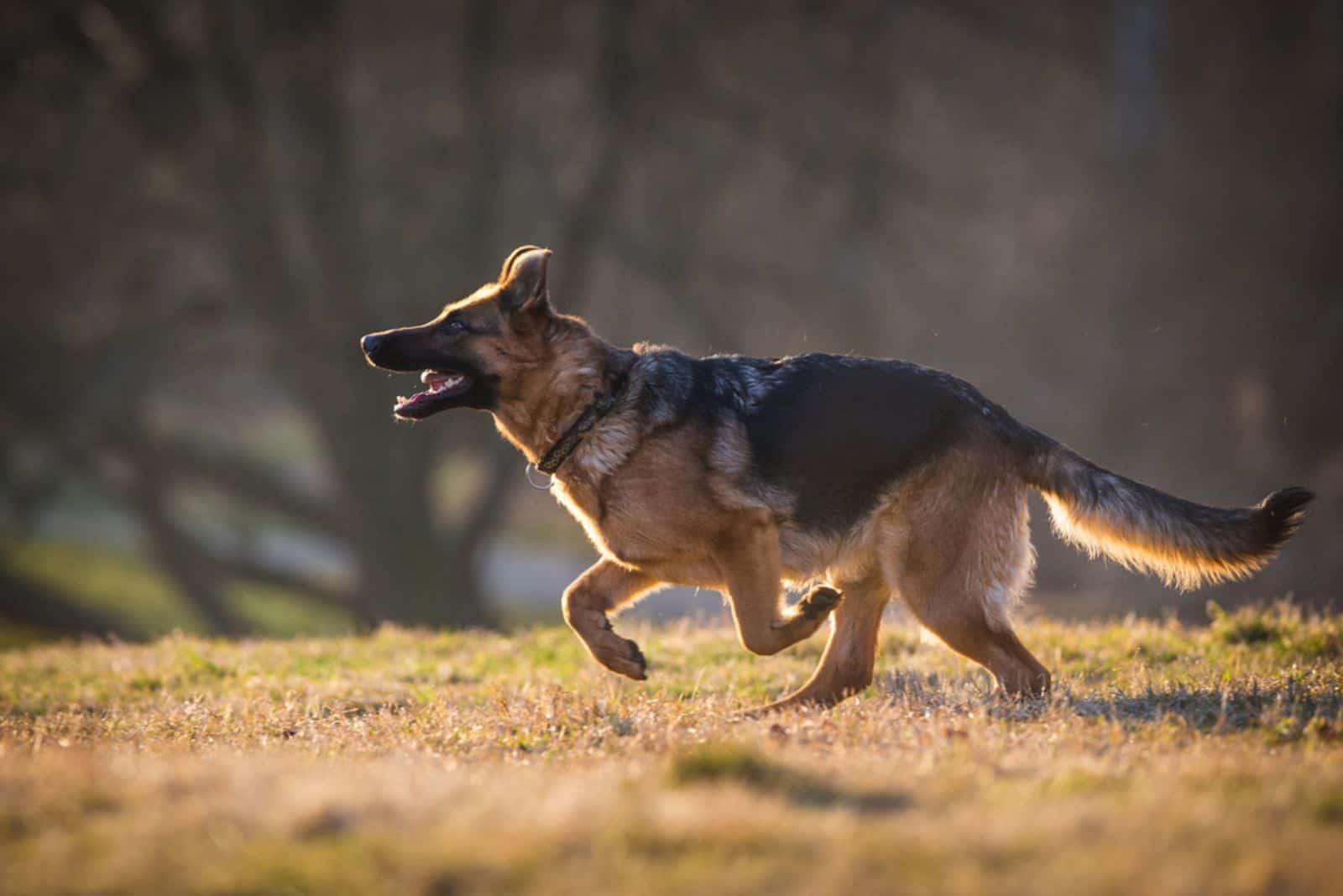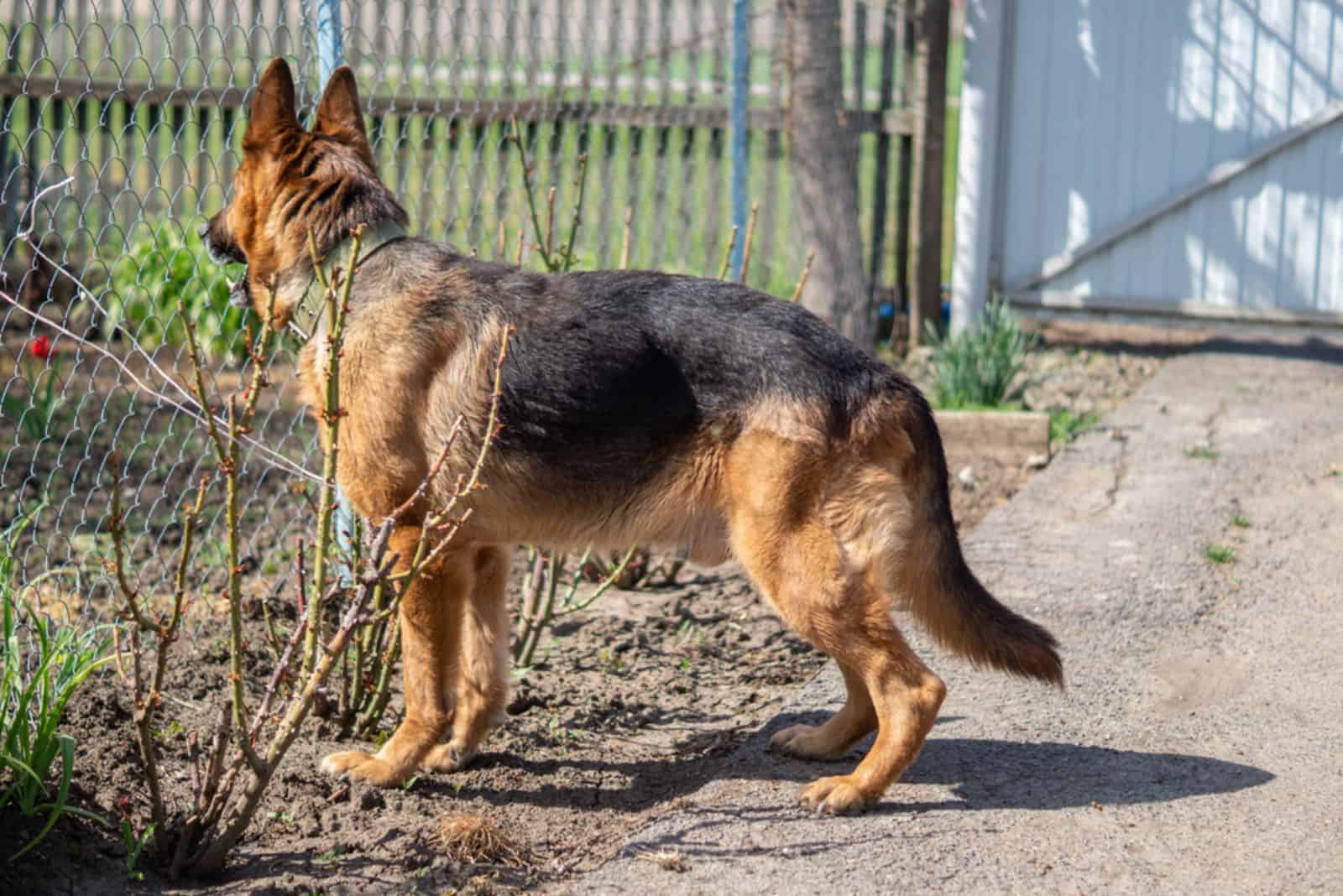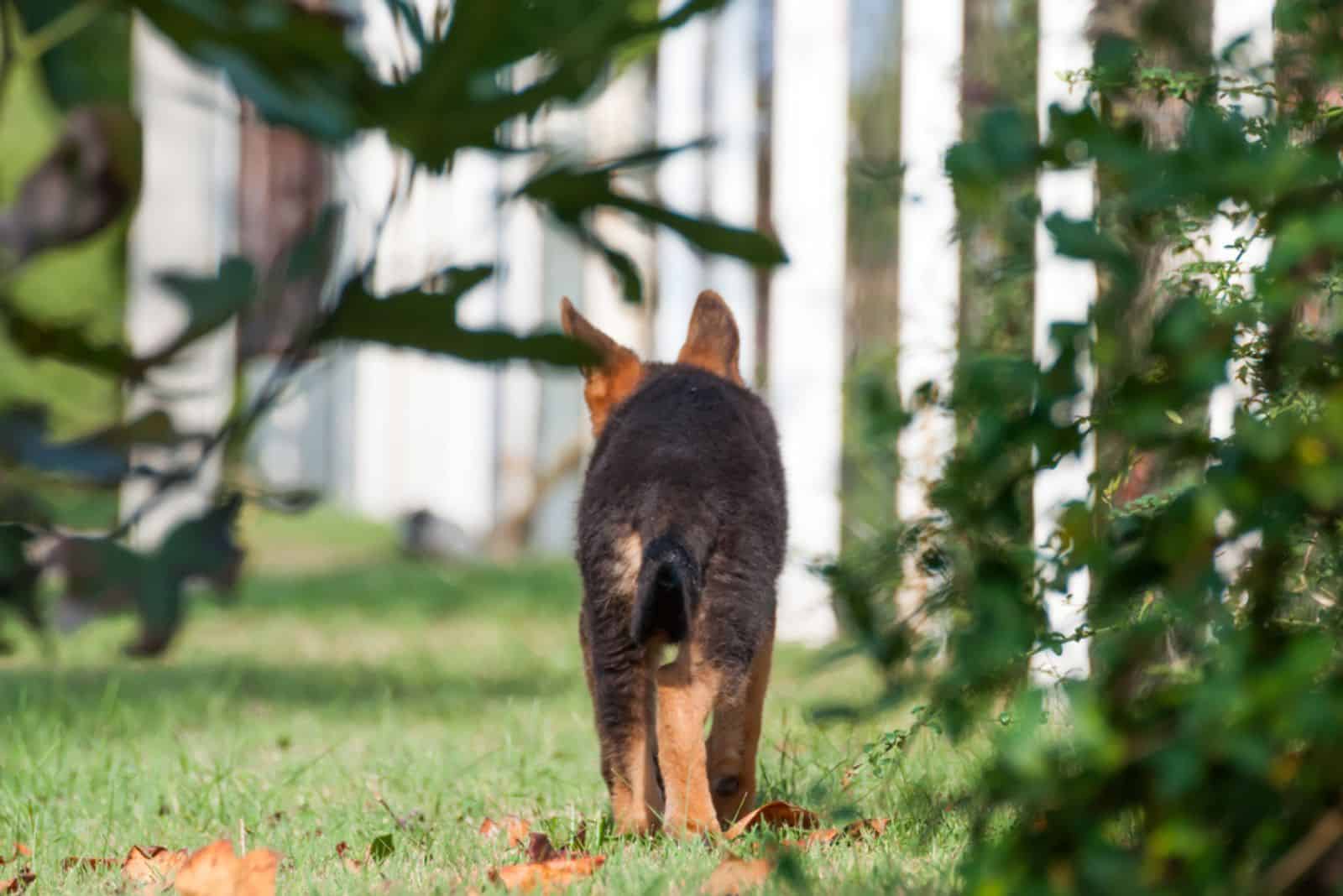Hop on over to the sloped-back mystery mobile, where we’ll be solving the age-old question that’s been plaguing dog lovers everywhere: Why do German Shepherds have sloped backs?
Is it a result of too much time spent lounging on the couch? A secret government experiment gone wrong? Or perhaps just a result of too many trips to the doggy chiropractor?
There are plenty of interesting answers and reasons behind GSD’s sloped backs and some may really surprise you! Are you ready to solve this hip-sloping mystery? Great!
Join us as we dive into the science, history, and various theories behind these majestic creatures’ peculiar posture.
Why Do German Shepherds Have Sloped Backs?

Because they make them look super-cool and unique, right? Well, while that may be the best answer, there are some good reasons why GSDs have sloped backs.
The sloped back of German Shepherds is like a badge of honor, earned from years of hard work and dedication to herding and working tasks.
Think of it like a super cool superhero cape, giving them the ability to run faster and jump higher than their straight-backed counterparts.
A Little Bit Of History
Once upon a time, there was a man named Max von Stephanitz.
He had the vision to create the perfect working dog and was determined to make it happen. He scoured the countryside looking for the best of the best in terms of strength, intelligence, and agility.
He finally found the dog he had been looking for: a dog with a sloping back, longer strides, and greater agility. He was so impressed with this dog that he decided to breed more just like it.
So, in the early 20th century, breeders carefully selected the best of the best and bred them together to create the ultimate herding dog breed and working machine, and voila, the German Shepherd dog with a sloped back was born!
It’s a feature that now defines the breed, and we can all thank those clever breeders for creating such a pawsome dog!
The Science Behind It
The sloping back is a genetic trait and is caused by the presence of certain genes. These genes control the development of the spine and the muscles that attach to it.
The specific genes responsible for the sloping back in German Shepherd dogs have not been identified yet, but it is likely that it’s a result of multiple genes working together.
The sloping back is then caused by a change in the angle of the vertebral column, specifically the thoracic and lumbar body regions. These genes control the development of the pelvis and the muscles that attach to it.
We may not see this characteristic in other shepherd breeds which makes this dog’s body very unique.
The Anatomy Behind It
German Shepherds have a super cool sloping back that makes them stand out from the crowd! It’s kind of like having a built-in ramp that allows them to stretch their legs and run faster.
But what’s really happening behind the scenes?
Well, it all starts with the backbone, which is made up of a bunch of bones called vertebrae. And in the case of German Shepherds, the middle and lower part of the backbone, the thoracic and lumbar regions, are a bit more angled (up to a 45-degree angle).
This is called angulation and it gives them the ability to take longer steps and be more flexible and agile. Don’t worry, having such angulation does not necessarily mean that this dog will walk sideways.
The hindquarters are made up of hocks, which are the joints located on the back of the hind legs, and the croup, which is the area on the back of the dog between the hips and tail.
And that’s not all, the angulation also affects the topline, which is the line that runs along the dog’s back.
The sloping back creates a nice arch on the topline and higher withers that gives the German Shepherd puppy a sleek and elegant look.
Why Do German Shepherd Back Slope Down?

It’s not just the bones that are responsible for the sloping back, the muscles also play a big role.
The muscles that run along the spine are like personal trainers that help these dogs keep their posture.
The muscles that attach to the front of the GSD’s spine, such as the pectoral muscles, are like a team of helpers that pull the front end of the spine forward.
So, it’s like having a whole squad working together to give the German Shepherd breed that cool sloping back, the hind legs, hocks, and hindquarters, and to create that smooth flow on their topline!
Can German Shepherds Have Straight Backs?
Well, it’s kind of like asking if a banana can be straight. Sure, bananas can grow straight, but it’s not the typical shape you expect to see.
Similarly, German Shepherds can have straight backs, but it’s not the most common type you’ll find.
The traditional German Shepherd is known for their sloping back, which is considered the breed standard and show line. But, just like with people, every dog is unique and some may have straight backs due to the genetics of their breeding lines.
There are many types of German Shepherds, these dogs come in two main variations, sloped-back and straight-back.
Sloped-Back And Straight-Back German Shepherds
While both types can be found in breeding lines, the sloped-back type is the most common and the one that is recognized by most kennel clubs and dog shows such as Crufts. Therefore, the sloped-back GSDs are the most popular pets and show dogs that you will often see in the show ring.
They are often referred to as “West German” Shepherds, as they were developed in western Germany. They are also the type that is most commonly used in working tasks such as herding and protection, these dogs are known as big guardians and working line dogs.
On the other hand, the straight-back GSDs are like the unique and exotic counterparts that have a straight back and a more square-shaped body. Additionally, the majority of these straight-back pooches are short-haired!
These herding dogs were developed in the eastern part of Germany and were bred for their endurance and strength.
What Does The German Shepherd Breed Standard Say?

According to the German Shepherd breed standard, the sloping back is considered one of the characteristics that define the breed.
It is described as a “gentle slope” that starts at the withers, which are the highest point of the shoulders, and ends at the croup, which is the area on the back of the dog’s hips and tail.
The slope should be just right, not too steep, and not too shallow, just like the perfect slide. It should give these dogs a sleek and elegant look, kind of like a runway model on the catwalk.
It’s important to remember that the breed standard is a guide for breeders and judges to evaluate the conformation of GSDs, but not all of these pups have to meet the standard in order to be great companions or working dogs.
Common Health Problems Of Sloped-Back GSDs
When it comes to the German Shepherd dog breed, the sloping back is like the cherry on top of a sundae. It’s a desirable trait that makes them stand out, but it is not necessarily good for them.
The sloping back, also known as angulation, can make them more prone to certain health issues.
It’s important to note that these health problems are not exclusive to sloped-back pups, all German Shepherds can be affected by them, but the sloping back can make them more prone to these issues.
Hip And Elbow Dysplasia

Ugh, not again with these skeletal problems! It pains me to say that some of the most common health problems of sloped-back German Shepherds are joint dysplasias.
Hip dysplasia is like when your favorite pair of shoes starts to wear out at the heel, it’s not comfortable and it may even hurt! Unfortunately, it is a genetic disorder that affects the hip joints of many large dogs like the GSDs.
Due to the pain they feel, many dogs may refuse to go on walks and feel very lethargic, anxious, and stressed.
Another common problem is elbow dysplasia, which is a similar disorder that affects the elbow joint, instead of the dog’s hip.
Osteoarthritis
Both hip and elbow dysplasia can lead to canine osteoarthritis.
Even the Royal Veterinary College agrees that these sloped-back furballs are more prone to this skeletal issue. It can cause pain and stiffness in the joints and can lead to lower back pain and back problems.
Even though osteoarthritis is common in older GSDs, it can affect younger ones if they are not taken care of properly.
This may also lead to your German Shepherd feeling anxious and generally under the weather.
Final Word On Sloped Backs
Why do German Shepherds have sloped backs? Because they are supaw models!
The GSD is like a supermodel on the runway, they were bred to have the perfect angles, especially in their hips and stifle (knees). This means they can take super long strides, like walking the catwalk.
And with those long strides, they might occasionally step on their hocks, like a supermodel would in heels. But don’t worry, it’s not a sign of bad health or cursed hips, it’s just part of their design.
With a reputable breeder and regular vet checkups, you can minimize the risk of these issues and enjoy your life with your German Shepherd for years to come. Therefore, it’s important to choose a reputable breeder who follows good breeding practices and health screening protocols, to minimize the risk of these issues.
These dogs may not be for first-time dog owners, but with lots of research and patience, you will understand how they behave and what they need.













